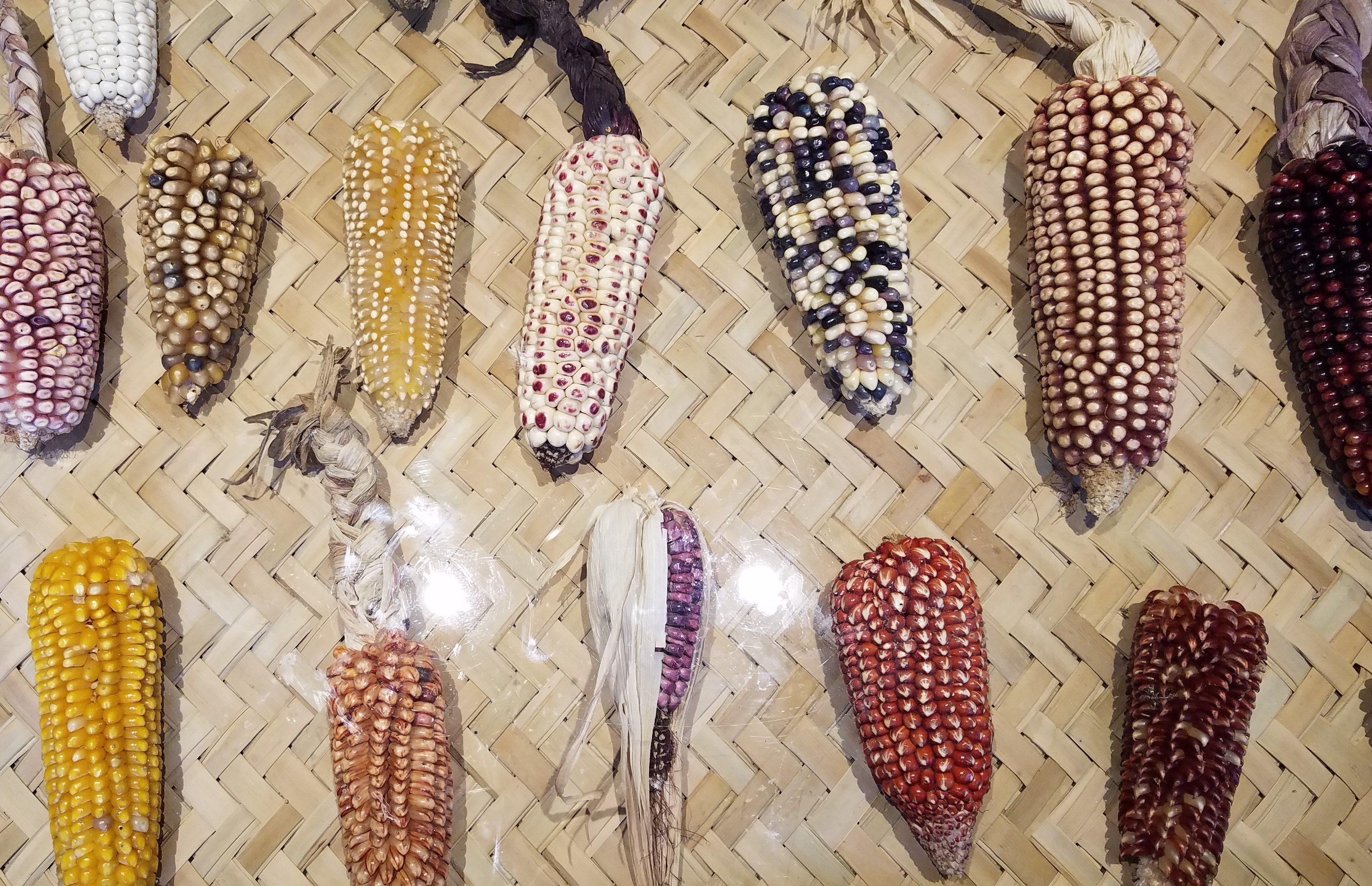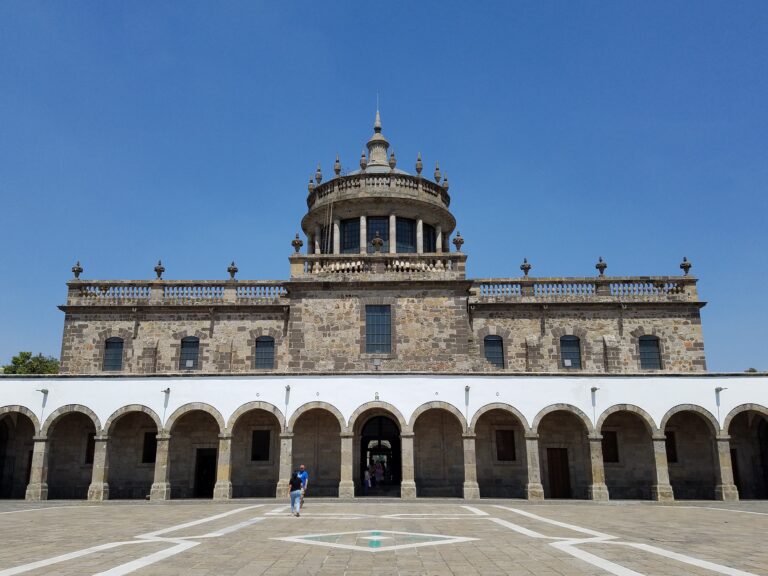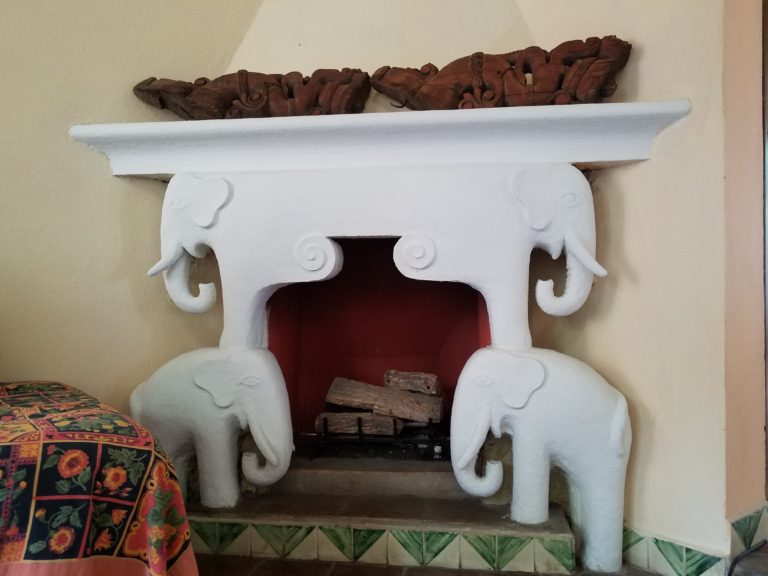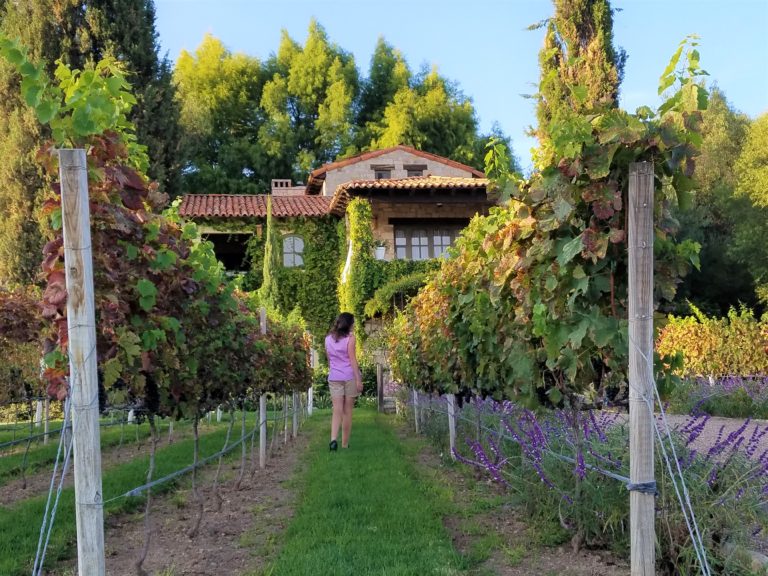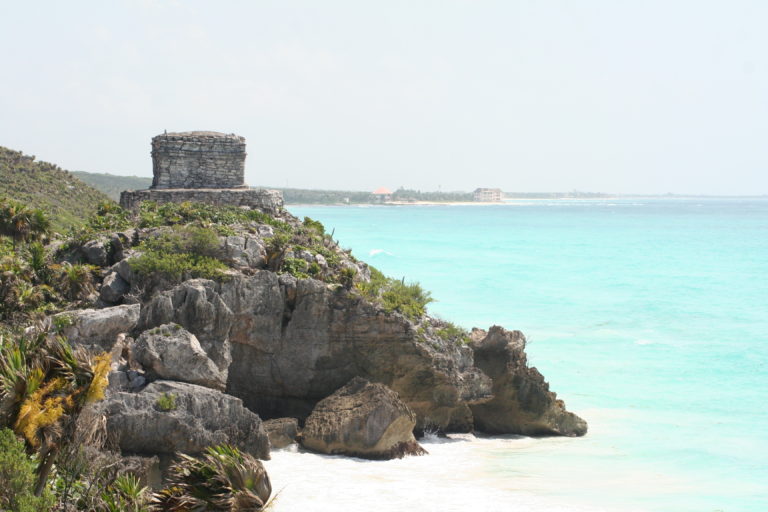How to Make Masa at High Altitude
Have you ever wondered about how to make tortillas or tamales from scratch? It is a lot more work than using prepared Maseca. It’s an artform and it takes time. A lot of time. Our friends at Cal y Maiz specialize in heirloom corn, and showed us how to make masa at high altitude.
The heirloom corn varieties Cal y Maiz works with are grown in the small state of Tlaxcala east of Mexico City. There are a variety of colors; white, yellow, pink, blue, black and red.
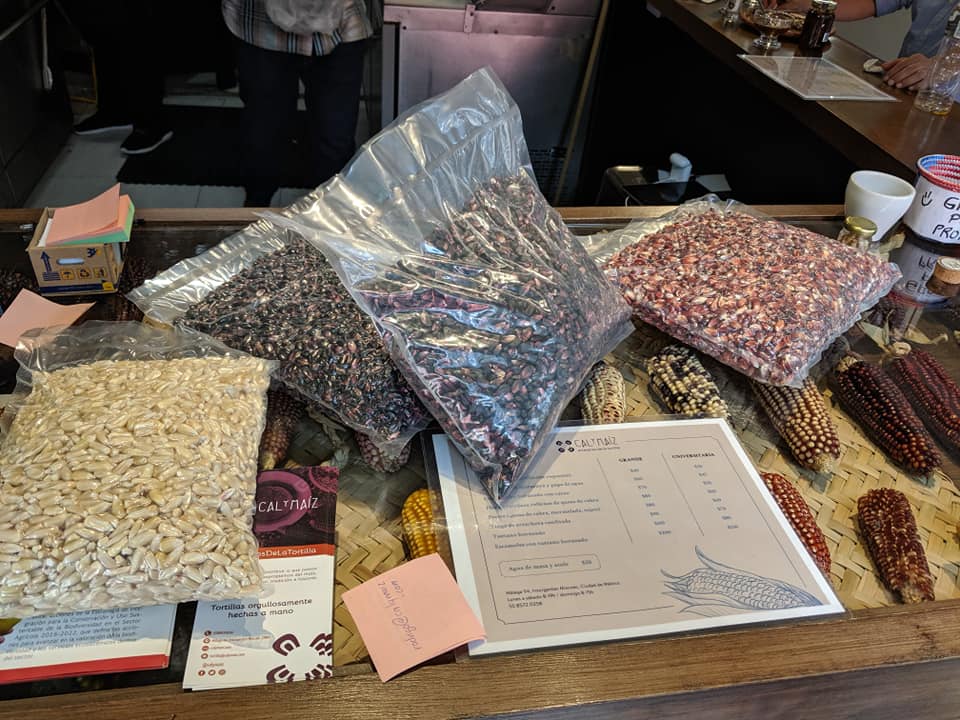
Below is a recipe for making masa in Mexico City. Altitude affects cooking times. The higher the altitude, the longer the cooking time required to soften and rehydrate your corn. So if you live at sea level you can reduce your cooking time by 20%.
Directions for Nixtamalizacion of Dried Corn:
Ingredients:
- Dried corn kernels (preferably heirloom varieties)- rinsed
- Lime (CAL)- Calcium Oxide (also known as quick lime or burnt lime) Available online.
- Water
*Interesting side note: When Calcium Oxide is heated to 2,400 degrees C it emits an intense glow. This form of illumination is known as “limelight” and was used broadly in theatrical productions before the invention of electrical lighting.
In one large pot:
Heat six (6) liters of water per kilo of dried corn in a non-reactive pot (Cal/Lime can damage aluminum pots) to 30 degrees celsius (86 degrees Fahrenheit).
* Good pots to use: Clay cazuelas if you can keep an eye on the heat or stainless steel if you have an electric stove.
In one small pot:
At the same time in another small pot activate the CAL (Lime) by heating it in a small amount of water until boiling. Simmer about five minutes stirring to dissolve.
Strain through a fine mesh strainer or chinois into the large pot with the water.
Immediately add the rinsed dried corn.
Cal Measurements:
- Black Corn: 6 grams per KG of dried corn
- Red Corn: 6 grams per KG dried corn
- White Corn: 10 grams per KG dried corn
CAL/Lime gives the tortillas flexibility but it can also bleach out color so deeply colored corn uses less CAL/Lime.
Turn up the heat until you reach a temperature of 60-68 Celsius (140-154 Fahrenheit) and maintain that temperature for the duration of the cooking time. Going over this temperature range will result in sticky Masa that is difficult to form into tortillas.
Cooking time:
- Black Corn: Three Hours
- Red Corn: Four Hours
- White Corn: Four Hours
Testing Kernels
*At the conclusion of the cooking time, test a few kernels of corn. If the skin can be separated from the kernel with your thumb nail and it is flexible and slightly sticky, then chew on a few kernels. It will still be pretty hard and nothing like cooked fresh corn, but if it has a corny taste like fresh tortillas then it is ready to rest and rehydrate.
Next, set aside the pots of cooked corn and let sit at room temperature covered for eight hours. For non-commercial quantities of one to several kilos, eight hours is required. Large batches for commercial use will hydrate enough to process in four hours because the volume keeps the pot much hotter.
The Next Morning: Drain, Rinse and Grind
Drain the corn well and gently rinse under the faucet to remove the surface lime. Don’t be too vigorous as you can remove the pectin which is required for a good tortilla.
*Remember, this is a dry weather crop recipe. Corn that is grown and stored in high humidity needs to be washed more to remove any fungus that might be present.
Process through a grain mill (or grain mill attachment that can be purchased for kitchen aid mixers) on a fine setting. I whole-heartedly recommend paying more for a solid metal attachment as the grain mill attachments with a plastic housing break easily.
For Tortillas:
If making Tortillas, the masa is now ready to be pressed out and cooked on a comal. The ladies at Cal y Maiz demonstrate on the video below how to form a ball and press it on a tortilla press using a white corn-rattle pepper masa.
Heat the tortilla on a comal, griddle, or flat frying pan over medium heat. When the tortilla puffs up, turn over and heat for an additional minute. It’s now ready to be served.
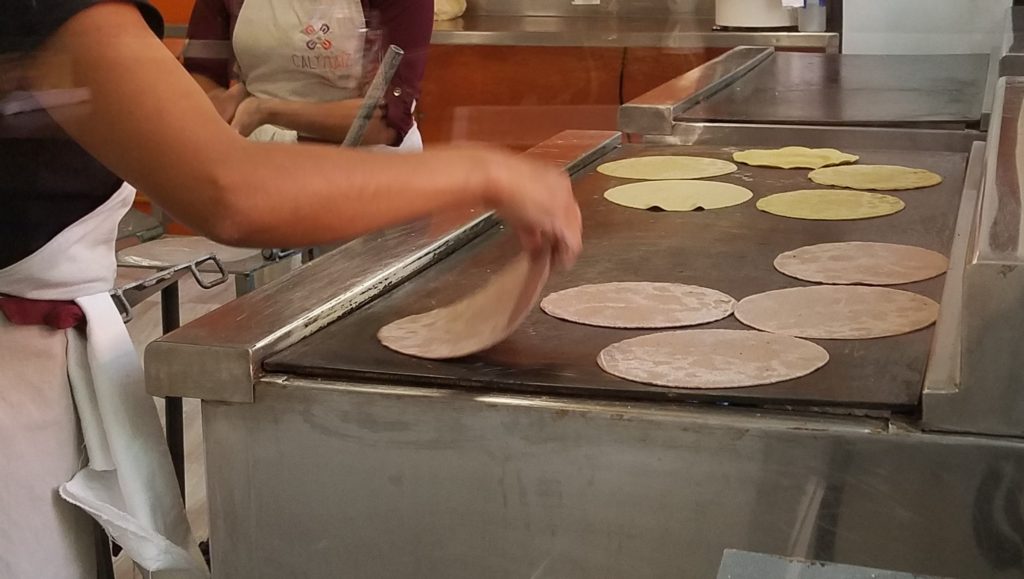
For Tamales:
Additional ingredients:
- Baking powder- start with 50-75 grams per kilo of masa
- Meat stock
- Salt
- Lard (Manteca)
If making tamales you will need to add baking powder, some meat stock of your choice, salt and lard (manteca) to the masa. This is based on feel. Start with the baking powder and add lard and just enough meat stock to get the consistency you want. You want the dough to be moist but not too sticky.
Whip it with the paddle attachment of a stand mixer until enough air is incorporated to make the masa light and airy. If you do not have a stand mixer you can mix the masa by hand kneading when the dough comes together. This will produce a denser masa.
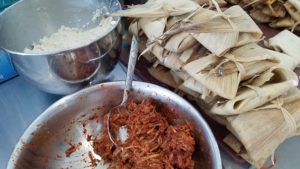
To see how to make tamales with fillings,
check out our post on
How to Make Tamales for Tamale Day.
If you want a drier tamale, wrap in plyable corn husks and steam.
For a moister tamale, wrap in banana leaves and plastic (to keep the moisture in) and steam.
Where to Make Masa in Mexico City
As you can see, the entire process of making masa for tortillas or tamales is an artform. We went over the basics in this post, but if you are in Mexico City and would like to learn more about making masa with Cal y Maiz, contact them on their website. Currently they have one location in Mixcoac Insurgentes in Mexico City, but are planning to open more locations.
Final Note:
Buy heirloom corn as it makes all the difference in the world!
**Sources: Cal Y Miaz, Mexico City +52 55 2690 8925

